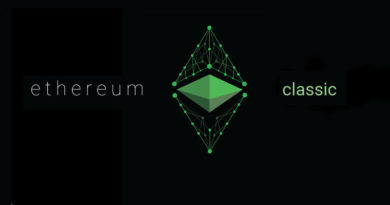Understanding Altcoins: A Guide to Alternative Cryptocurrencies
In the dynamic world of cryptocurrencies, Bitcoin has long reigned supreme as the trailblazer. However, as the crypto market matures, a plethora of alternative cryptocurrencies, collectively known as altcoins, has stepped into the limelight. This article explores the diverse landscape of altcoins, delving into their significance, types, and notable examples.
What Are Altcoins?
Altcoins, a fusion of “alternative” and “coin,” encompass all cryptocurrencies excluding Bitcoin. While Bitcoin dominates, altcoins have risen in popularity for their unique features. They serve various purposes, from enhancing privacy to enabling smart contracts and exploring alternative consensus mechanisms.
Types of Altcoins
Forked Coins:
Forked coins, a significant altcoin category, result from forking existing blockchains. This process allows developers to address issues, add features, or alter consensus mechanisms. There are two primary fork types: soft forks and hard forks.
- Soft Forks:
- Backward-compatible upgrades enhancing efficiency or security.
- Example: Bitcoin’s Segregated Witness (SegWit).
- Hard Forks:
- Irreversible changes creating separate chains.
- Examples: Bitcoin Cash (BCH), Bitcoin SV (BSV), PacCoin (PAC)
Bitcoin Cash (BCH):
Bitcoin Cash, a notable fork in 2017, addressed scalability by increasing block size, facilitating more transactions per block.
Litecoin (LTC):
Considered a sibling to Bitcoin, Litecoin introduced improvements like a shorter block generation time and a different hashing algorithm.
Forked coins, born from scalability needs or ideological differences, add diversity to the cryptocurrency landscape, offering users tailored options.
Tokens:
Tokens extend beyond digital currencies, built on existing blockchains for various purposes. Ethereum, a leading platform, introduced ERC-20 tokens, fostering innovation and flexibility.
- Ethereum (ETH) and ERC-20 Tokens:
- Fungible tokens traded on the Ethereum blockchain.
- Examples: Chainlink (LINK), Uniswap (UNI), Tether (USDT).
- Utility Tokens:
- Grant access to specific functionalities within a blockchain.
- Example: Binance Coin (BNB) for Binance Smart Chain services.
- Security Tokens:
- Represent ownership of real-world assets, bridging traditional markets and blockchain.
- Non-Fungible Tokens (NFTs):
- Unique tokens for digital or physical asset ownership.
- Examples: CryptoKitties, Decentraland, NBA Top Shot.
- Stablecoins:
- Tokens pegged to stable assets, offering stability.
- Examples: Tether (USDT), USD Coin (USDC).
Tokens play a pivotal role in blockchain innovation, allowing projects to focus on specific functionalities and enhancing the technology’s utility.
Privacy Coins:
Privacy coins form a subset designed to enhance user anonymity and transaction confidentiality, addressing limitations of pseudonymous ledgers like Bitcoin.
- Monero (XMR):
- Prominent for robust privacy features like ring signatures and stealth addresses.
- Zcash (ZEC):
- Utilizes zero-knowledge proofs for transaction privacy.
- Offers shielded or transparent transactions.
- Dash (DASH):
- Optional privacy features through PrivateSend functionality.
- Users choose between transparent and private transactions.
- Grin and Beam:
- Implement Mimblewimble protocol for enhanced scalability and privacy.
The privacy coins cater to users prioritizing confidentiality, though regulatory concerns have arisen due to potential misuse.
As the cryptocurrency landscape evolves, altcoins, tokens, and privacy coins continue to shape its future. Forked coins provide diversity, tokens foster innovation, and privacy coins address user confidentiality. The ongoing dialogue about privacy and regulatory compliance underscores the dynamic nature of the digital asset space.
Smart Contract Platforms: Revolutionizing Blockchain Dynamics
Smart contract platforms are the backbone of blockchain evolution, ushering in a new era of self-executing contracts encoded with predetermined rules. Going beyond mere cryptocurrency transactions, these platforms fuel the development of decentralized applications (DApps) and programmable digital contracts. Let’s explore the key features and examples of these transformative platforms:
Ethereum (ETH): Pioneering Innovation
Ethereum stands tall as the pioneer in smart contract platforms since its launch in 2015. Introducing a Turing-complete programming language, it empowers developers to craft a diverse range of decentralized applications. Ether (ETH), Ethereum’s native cryptocurrency, fuels transactions and computational processes on the network.
Binance Smart Chain (BNB): Speed and Affordability
Binance Smart Chain, birthed by the renowned cryptocurrency exchange Binance, offers a swift and cost-effective alternative to Ethereum. Supporting smart contracts and decentralized applications, Binance Coin (BNB) acts as the native cryptocurrency for transactions and fees.
Cardano (ADA): Sustainability and Scalability
Cardano distinguishes itself with a focus on sustainability, scalability, and interoperability. Its layered architecture separates settlement and computation layers, enhancing efficiency. ADA, Cardano’s native cryptocurrency, drives transactions within the network.
Polkadot (DOT): Interoperability in Action
Polkadot, a multi-chain platform, enables different blockchains to interoperate and share information. This facilitates the creation of specialized blockchains called parachains, tailored for specific use cases. DOT tokens power the Polkadot network.
Tezos (XTZ): Self-Amending Governance
Tezos, a self-amending blockchain, supports on-chain governance, enabling stakeholders to vote on protocol upgrades. Ensuring security and upgradability, XTZ serves as the native cryptocurrency for the Tezos network.
The impact of smart contract platforms extends to decentralized finance (DeFi), non-fungible tokens (NFTs), and various other applications. Developers leverage these platforms to create innovative solutions without relying on centralized intermediaries.
Challenges and Evolution
While smart contracts offer transparency and efficiency, challenges like scalability, security, and potential bugs in contract code persist. Ongoing developments aim to address these concerns, propelling the capabilities of decentralized applications and smart contracts within the blockchain ecosystem.
Navigating the Stablecoin Landscape: Bridging Finance and Cryptocurrencies
Stablecoins play a vital role in addressing volatility within the cryptocurrency ecosystem. Tethering their value to traditional fiat currencies or stable assets, they provide a reliable medium of exchange, store of value, and unit of account. Let’s delve into some notable stablecoins:
Tether (USDT): Controversial Stability
Tether, a widely used stablecoin, pegs its value to the US Dollar. However, its controversial nature arises from concerns about adequate fiat currency reserves backing each USDT, often used for trading and liquidity in cryptocurrency markets.
USD Coin (USDC): Regulated Transparency
USD Coin, pegged to the US Dollar, boasts transparency through audits by regulated financial institutions. Regular checks ensure the amount of USD in reserve aligns with the circulating supply of USDC tokens, making it popular in various DeFi applications.
Dai (DAI): Decentralized Stability
Dai, a decentralized stablecoin on the Ethereum blockchain, maintains its peg through collateralized debt positions (CDPs) and smart contracts. Users generate Dai by locking up Ethereum assets as collateral.
Binance USD (BUSD): Binance’s Stable Asset
Binance USD, regulated and audited, is pegged to the US Dollar. Issued by Binance, it provides users with a stable and transparent digital asset for transactions within the Binance ecosystem and beyond.
TrueUSD (TUSD): Fully-Backed Transparency
TrueUSD, pegged to the US Dollar, undergoes regular third-party attestations, verifying its one-to-one peg with the US Dollar. It serves as a fully-backed and transparent alternative in the stablecoin arena.
Stablecoins act as vital bridges between traditional finance and cryptocurrencies, facilitating easy transfers and trades on blockchain networks. Beyond trading, they play a pivotal role in DeFi protocols, enabling lending, borrowing, and liquidity provision.
Challenges and Future Trends
Despite providing a more stable value, stablecoins face challenges like regulatory scrutiny, the need for continuous audits, and the risk of centralization. As demand grows, ongoing innovations and regulatory developments will shape the future landscape of these essential crypto assets.
The Significance of Altcoins: Beyond Bitcoin’s Shadow
Diversification: A Shield Against Risks
Altcoins offer investors a chance to diversify cryptocurrency portfolios, mitigating risks and enhancing overall performance. Going beyond Bitcoin’s dominance creates a resilient investment strategy.
Innovation: Pioneers of Technology
Often at the forefront of technological innovation, altcoins experiment with consensus algorithms, governance models, and use cases. They drive the crypto world’s boundaries, pushing for continuous evolution.
Specialization: Tailoring Solutions
Different altcoins cater to specific niches and use cases. Privacy coins provide enhanced anonymity, while smart contract platforms facilitate decentralized application development, showcasing the diverse landscape of possibilities.
Competition and Evolution: Driving Progress
The existence of numerous altcoins fosters healthy competition, pushing continuous development and improvement within the cryptocurrency ecosystem. It allows the market to adapt to changing technological and regulatory landscapes.
Altcoins are pivotal in shaping the dynamic world of cryptocurrencies, contributing to new technologies, use cases, and investment opportunities. Whether you’re an investor, developer, or enthusiast, staying informed about the diverse landscape of altcoins is crucial in navigating the rapidly changing crypto market.
Conclusion
In the ever-evolving realm of blockchain and cryptocurrencies, smart contract platforms, stablecoins, and altcoins play integral roles. They drive innovation, address challenges, and offer diverse opportunities. As the crypto space continues to unfold, staying informed and adaptable is key to navigating this exciting journey.




